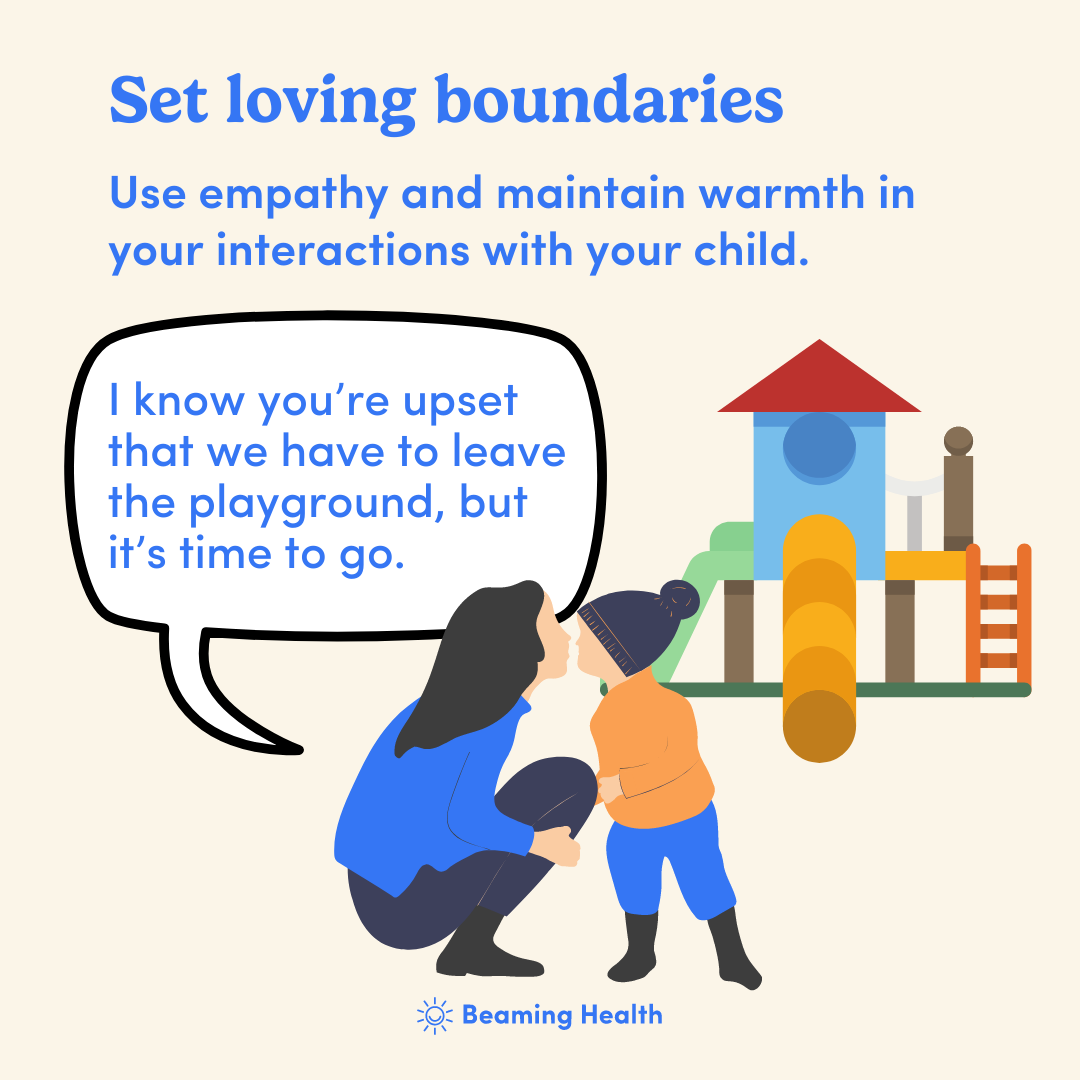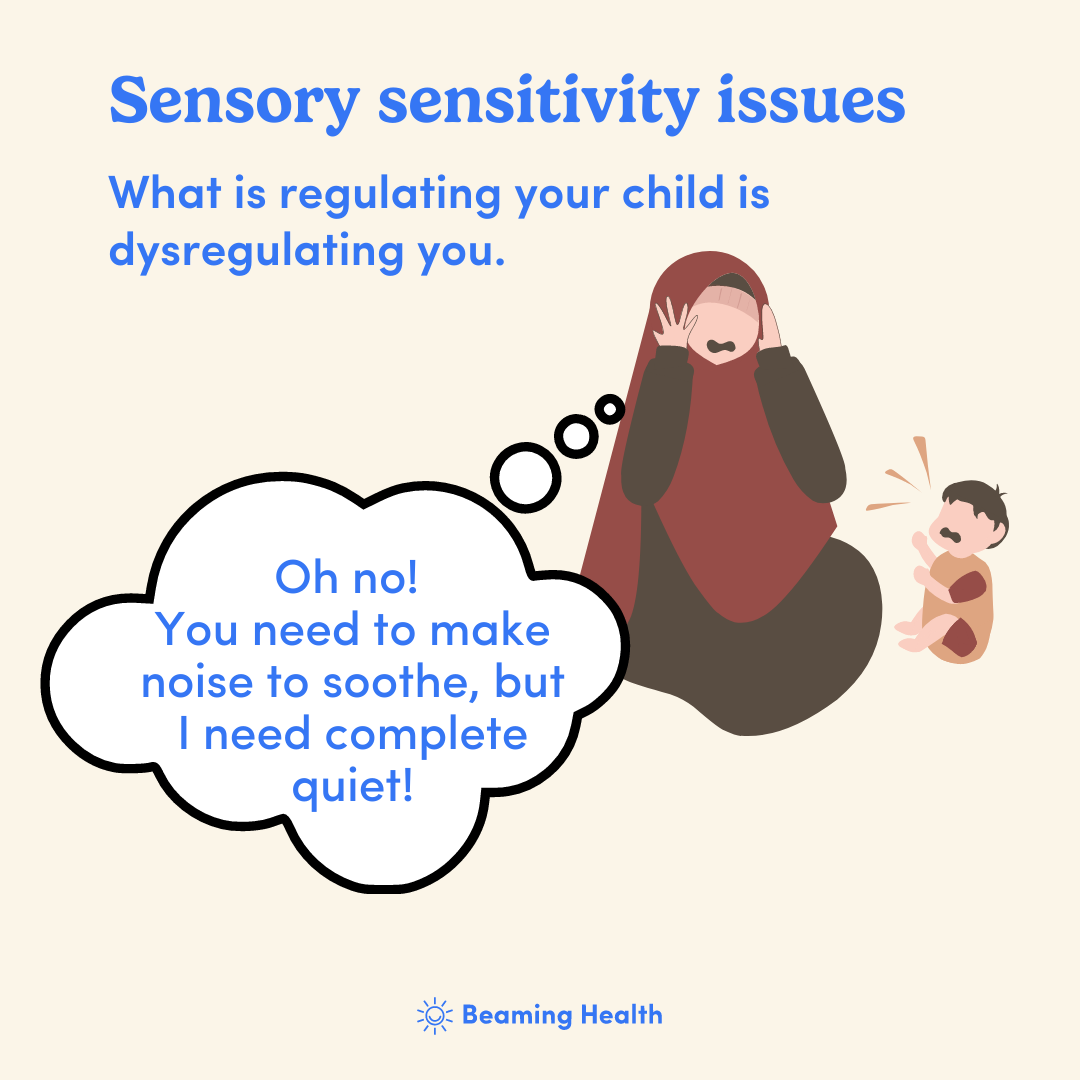Autism and attachment: How to build a secure attachment
Updated: August 29, 2023 · 6 Minute Read

Reviewed by:
Danielle Aubin, LCSW and owner of Presence Perinatal
Highlights
- Attachment starts from the moment your child is born and can change with life experiences such as marriage or divorce.
- Make eye contact when and if your child is comfortable with it, give your focused attention, communicate frequently even if they can’t speak yet, take an interest in their activities and interests, and play with them.
- When autistic kids are raised knowing they’re autistic and accepted for who they are, it creates better outcomes for them as adults, including better mental health.
- Neurodivergent parents, especially mothers, have a tendency to mask and experience sensory overload.
Your relationship with your child is the foundation for their life. Among the 4 attachment styles, secure attachment is best. But how do you securely attach to your autistic child, especially when there are unique challenges that may make attachment difficult? We’ve got science and parent-backed tips to help you build a secure bond with your child.
When does attachment start? Is it too late to attach securely?
The process of attachment begins from the moment your child is born (or if they’re adopted, the moment you receive them into your care). If you’ve had issues in your relationship with your child in the past, it’s not too late to make things right. You can begin securely attaching today.
3 foundations for a secure attachment
Creating a secure bond with your child may seem like a difficult task, but it really boils down to a few things: responsiveness, consistency, and secure relationships.
1. Be highly responsive
Responsiveness and attentiveness are major ingredients in forming a secure attachment with your child. Giving focused attention, making eye contact (when and if your child is comfortable with it), communicating frequently (talking to your child, even if they’re not able to speak back), taking an interest in their activities and interests, play, and anticipating/meeting their needs are all examples of ways you can be attentive and responsive to your child.
Use empathy and maintain warmth in your interactions with your child. Even when times are hard or you’ve got to give consequences for their actions, make sure it’s in a loving way. You can acknowledge your child’s needs and feelings while also holding firm boundaries. This shows your child you care, you see them, and you are on their side.
Sometimes we can be too firm or too soft. It’s easy to fall into giving your child everything they want to prevent a tantrum. It’s also easy to immediately jump to yelling or punishment instead of seeing your kiddo’s perspective. The perfect balance looks like accommodating in a loving way while still holding boundaries. You don’t want to be a drill sergeant, but you don’t want to be a pushover either. A lot of this will depend on the situation and what your child is dealing with at the moment (sleepy, hungry, overstimulated, etc.). For example, if transitions are hard, provide a buffer (if you can) between transitioning activities.
Example: “I know you’re upset that we have to leave the playground, but it’s time to go.”

Anticipating and meeting your child’s needs can get tricky as your child gets older. It’s important to foster your child’s need for independence and autonomy. Give them chances to help themselves or communicate their needs, but make sure you’re anticipating and meeting their needs when necessary.
Example: Your nonverbal child may not know how to express they’re hungry, but as their parent, you may know the “signs” and make sure food is available to them.
At times, your child will have to wait for you to meet their needs. When this happens, be sure to acknowledge them and the situation and explain what’s going on. This reassures them that you understand and will take care of them.
Example: “I hear that you are frustrated. As soon as I finish talking to Daddy, I’ll help you.”

(Note: It will take consistency and repetition on your part, but your child will eventually learn that you do care and will meet their needs — they just may need to wait a bit!)
2. Remain available and consistent
It’s hard to juggle being present with our children along with work, home responsibilities, education, personal relationships, and more. Taking care of yourself, through rest, respite, spending time with other grown-ups, or engaging in hobbies you love, can help you avoid burnout. You want to be able to show up as your best self for your child. Making yourself open and receptive to your child — both physically and emotionally — is a crucial part of creating a secure bond with them.
When your child speaks to you (or if they’re nonverbal, when they try to communicate), be responsive and engaged. Take time to be present with them, distraction-free. Quality time gives kids the one-on-one attention they need. Respond to your child’s frustrations, heartbreaks, anger, and disappointment with a listening ear and plenty of love. Keep in mind that all behavior is communication — so sometimes it’s not what your child says, it’s what they do. Oftentimes what seems like misbehavior is actually a cry for connection/attention.
Play is often the love language of children. It can also be a key factor in being present and attentive to your child. However your child likes to play, get in there! If you struggle with connecting with your child, check out this downloadable guide for expert and parent-backed tips.
Consistency is key. Your child needs to know you’re not going to switch up on them, and that they can trust you to be a steady and reliable person in their lives. This can look like honoring your promises and commitments (as much as possible), maintaining and regulating your own emotions, and being a constant, open presence in your child’s life. It’s okay to apologize when you’re wrong and admit when you need to do better. Your child will appreciate knowing that you’re human, too. Remember, they’re learning by watching you.
Sometimes you won’t get things right, and that’s okay — as long as you repair the damage. You can’t be available every single moment, and devoting every minute to your child isn’t really reasonable. You may miss a signal that your child has a need or wants your attention, or maybe you lose your temper (we’ve all been there). When this happens, work to repair things quickly.4 Don’t forget to practice self-compassion and recognize that it’s okay to make mistakes. It’s more about how you recover than it is about being perfect. You’ll learn more about your child’s needs through trial and error — try to be flexible and lean on your intuition when needed.
3. Encourage attachment with others
Among neurotypical kids, those who form a secure attachment with their mother, father, and daytime caregiver benefit the most. Sibling relationships are also important as a source of comfort and for feelings of closeness, and this is also true for children with autism.
Feeling secure with teachers, coaches, therapists/service providers, friends, and more can help your child blossom in many ways. Friendships are a priceless addition to any child’s life, and something many autistic people desire but need extra help with. Encouraging your child to have secure and close connections with multiple people in their lives can help them become more emotionally literate and have a more fulfilling life.
Secure attachment tips for autistic children

Attaching securely with an autistic child has unique challenges and factors for parents and kids. Having a support system, moving past the grief of your child’s diagnosis, seeing your child for who they are, focusing on strengths rather than weaknesses, and communication are all important steps in building secure attachment with your kiddo on the spectrum.
What are the benefits of forming a secure attachment?
Research shows that securely attached autistic kids tend to have better social, communication, and play skills.1,2,3 Autistic toddlers who have a secure attachment with their primary caregiver showed a greater array of play and social skills, which are an essential part of development.5 Researchers theorized that this may be due to the parent setting an example by interacting in play with their child.6 (In fact, attachment style was a better predictor for play skills in autistic toddlers than their level of diagnosis.5) In other words, secure attachment can outweigh your child’s “support level.”
When autistic kids are raised knowing they’re autistic and being accepted for who they are, it creates better outcomes for them as adults, including better mental health. They are better at regulating their emotions and show less challenging behaviors.2,3 Autistic children who have a secure attachment with their primary caregiver/parent were shown to have fewer “problem” behaviors and were more empathetic than those with another type of attachment.1,2,3 Children who have a secure attachment with their primary caregiver have better self-esteem, closer friendships and relationships with loved ones, better romantic relationships in adulthood, better social skills, and are better at handling stress.4 Feelings of trust are also the product of secure attachment.
Can attachment style change?
Yes, attachment style can change over the course of a child’s life. Events, such as divorce, trauma, etc. can change a child’s attachment to a parent or caregiver. Children who were previously securely attached tend to rebound easier from big events than those who were not.
Of course, sometimes upsetting things will happen in your child’s life, but that doesn’t mean every upsetting thing will change your child’s attachment to you. It’s more about how the upsetting thing happens to your child. (E.g. did you support them before, during, and after? Did you quickly recover with them?)
If you don’t feel your child is securely attached to you, you can always begin practicing the ingredients for healthy attachment now. And when upsetting things happen, you can continue to foster a secure attachment with your child to support them through the rough patches.
Secure attachment tips for autistic/neurodivergent parents
Parenting is hard, but for autistic parents, it can be even more demanding and overwhelming. If your child is also neurodivergent, things can become really tricky.
Autistic parents feel a strong connection and closeness with their children, the same as a neurotypical parent would. However, autistic parents have unique considerations because they’re trying to meet their child’s needs while also managing their own special needs. (E.g. your son’s loud stimming is grating to your sensory-sensitive ears — what is regulating for him is dysregulating to you.)

In a study of autistic mothers, the mothers reported feeling all the things you’d usually think of when parenting: joy, elation, reward, and stress.7 But for autistic parents, that stress can be increased by their own sensory challenges, difficulty obtaining proper support, and judgment from uninformed people (especially medical professionals).7 If you can, seek out neurodiversity-affirming care to avoid the additional stress of being misunderstood.
Autistic mothers are at higher risk for experiencing postpartum depression, which can make everyday life more difficult for you and your child.8 Parents of autistic children also receive less support than parents of other special needs children.8 That’s why it’s important for you to take care of yourself and set aside time to rest and recharge.
You can securely attach to your child and have a meaningful relationship with them, but having the right support will make all the difference. Set realistic expectations for yourself and continue to improve your ability to respond to your child. Prioritize your own self-care as a caregiver in order to ensure you can be as emotionally available as possible for your child. Reaching out to other autistic parents for advice and support, or even training in areas you need help with can be invaluable.
The tendency to mask, autistic burnout, and sensory overload are all concerns to be mindful of. Things like wearing Loop earplugs, taking plenty of play/outdoor breaks (to get out of the house), meditation/yoga, a weighted blanket, or walking away for a moment when you get overwhelmed, can help you manage your own sensory needs. If possible, try to find a physician who understands autism, neurodiversity, or is autistic/neurodivergent themselves. That way, they can help you address your needs (like unmasking) that are unique to you.
Conclusion
You could view secure attachment as the foundation for a healthy relationship with your child, as well as a springboard for their bright future. There is a treasure trove of benefits to having a secure attachment for you and your child.
Get our best articles delivered to your inbox each month.
We respect your privacy.
Dive Deeper
Article References
- Lee H. For children with developmental disabilities, parenting style matters. News. Published November 7, 2012. https://news.byu.edu/news/children-developmental-disabilities-parenting-style-matters
- Rutgers AH, van IJzendoorn MH, Bakermans-Kranenburg MJ, et al. Autism, Attachment and Parenting: A Comparison of Children with Autism Spectrum Disorder, Mental Retardation, Language Disorder, and Non-clinical Children. Journal of Abnormal Child Psychology. 2007;35(5):859-870. doi:10.1007/s10802-007-9139-y
- Palmer M, Paris Perez J, Tarver J, et al. Development of the Observation Schedule for Children with Autism-Anxiety, Behaviour and Parenting (OSCA-ABP): A New Measure of Child and Parenting Behavior for Use with Young Autistic Children. J Autism Dev Disord. 2021;51(1):1-14. doi:10.1007/s10803-020-04506-3
- Divecha, D. What is a Secure Attachment? And Why Doesn’t “Attachment Parenting” Get You There? — Developmental Science. Developmental Science. Published April 3, 2017. https://www.developmentalscience.com/blog/2017/3/31/what-is-a-secure-attachmentand-why-doesnt-attachment-parenting-get-you-there
- Naber FBA, Bakermans-Kranenburg MJ, van IJzendoorn MH, et al. Play Behavior and Attachment in Toddlers with Autism. Journal of Autism and Developmental Disorders. 2007;38(5):857-866. doi:10.1007/s10803-007-0454-5
- Oppenheim D, Koren-Karie N, Dolev S, Yirmiya N. Maternal insightfulness and resolution of the diagnosis are associated with secure attachment in preschoolers with autism spectrum disorders. Child Dev. 2009;80(2):519-527. doi:10.1111/j.1467-8624.2009.01276.x
- Dugdale AS, Thompson AR, Leedham A, Beail N, Freeth M. Intense connection and love: The experiences of autistic mothers. Autism. 2021;25(7):1973-1984. doi:10.1177/13623613211005987
- Mothers With Autism Face Higher Rates of Postpartum Depression. PracticeUpdate. Accessed October 19, 2022. https://www.practiceupdate.com/content/mothers-with-autism-face-higher-rates-of-postpartum-depression/96067













